WBG at Art First, London, 2000. Photo: Simon Norfolk
The Road, c.1936, oil on canvas, BGT10535 and Edinburgh Interior, 1938, oil on hardboard, BGT328
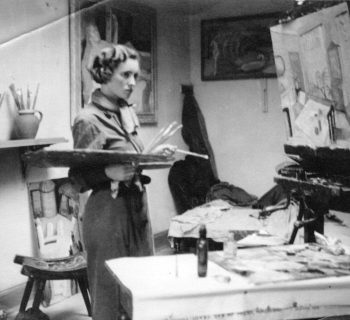
Wilhelmina Barns-Graham in her studio at 5 Alva Street, Edinburgh, November 1937.
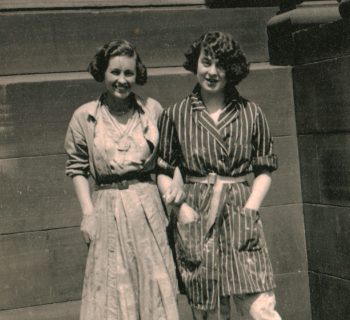
WBG with Margaret Mellis, Edinburgh College of Art, c.1937
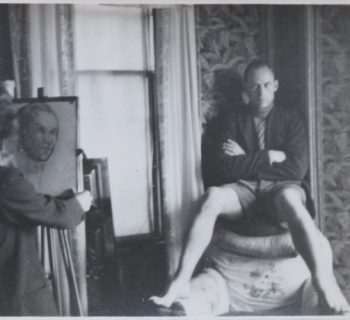
WBG sketching a portrait of fellow artist Edwin Lucas, Alva Street, Edinburgh, c.1938
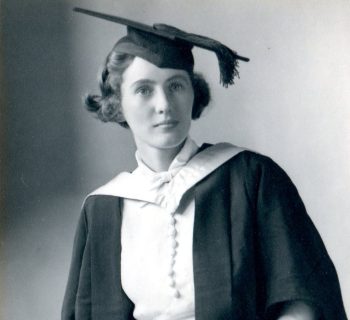
WBG graduating from Edinburgh College of Art, 1937
Island Sheds St Ives II, 1940, oil on hardboard, BGT1072 and Studio Interior, 1947, oil on canvas, BGT1256
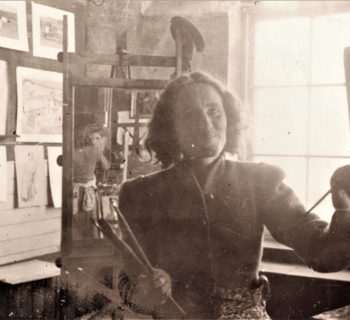
WBG painting a portrait of Per Hektoën, a Norwegian naval officer (just seen in mirror), in Porthmeor Studio No. 3 c. 1942
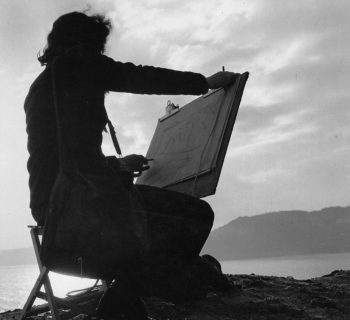
WBG sketching from a vantage point above Porthgwidden, 1947
Photo: Central Office of Information, London
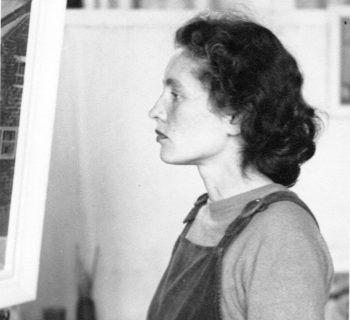
WBG at her easel in Porthmeor Studios, 1947
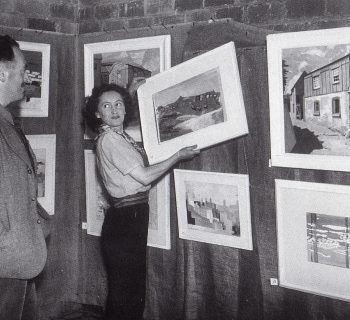
WBG at an exhibition of her Cornish Paintings, Downing's Bookshop, St Ives, 1947
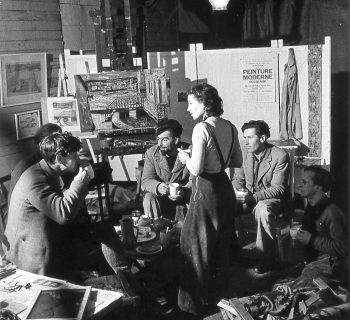
A Meeting of the Crypt Group in Wilhelmina Barns-Graham's Porthmeor Studio, St Ives, 1947
Left to right: Peter Lanyon, Bryan Wynter (obscured), Sven Berlin, Wilhelmina Barns-Graham, John Wells and Guido Morris
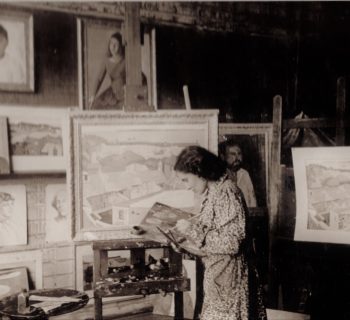
WBG working in her studio, Porthmeor Studios No.3, 1942
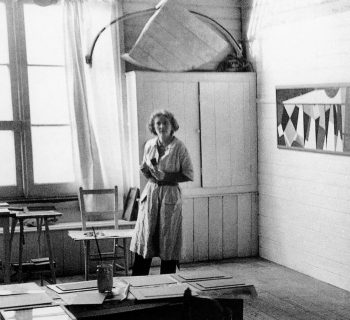
WBG in her studio, Porthmeor Studio No.1, 1953
Photo: Roger Mayne
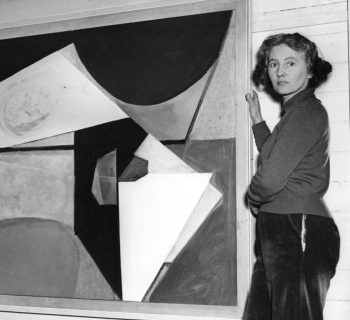
WBG in her studio at Portmeor Studios No.1 with Rock Form
Photo: Western Morning News
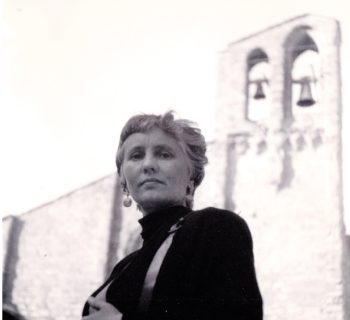
WBG in Sicily in 1955
Photo: probably David Lewis
Fireworks, 1972, oil on hardboard, BGT1218, Assembly of Nine, 1964, oil on hardboard, BGT558 and Bride II, 1969, oil and acrylic on hardboard, BGT342
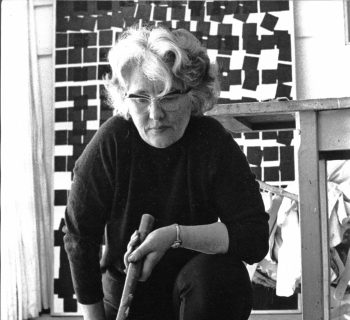
WBG working in her studio with Progression, 1965 in the background
Photo: Ander Gunn
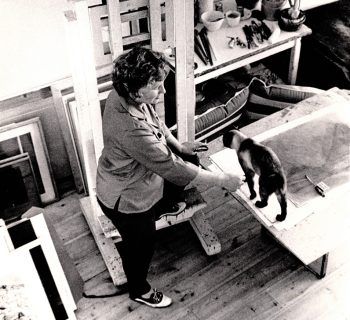
WBG in her Barnaloft studio with a cat
Photo: Peter Kinnear
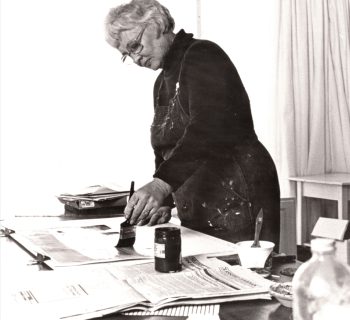
WBG, possibly working in her drawing studio at Barnaloft, 1975
Photo: Peter Kinnear
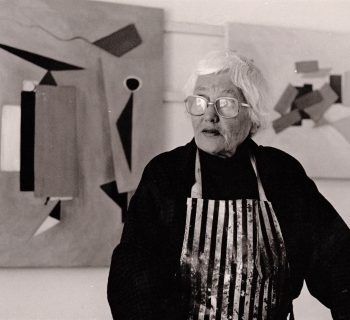
WBG in her Barnaloft studio, late 1980s
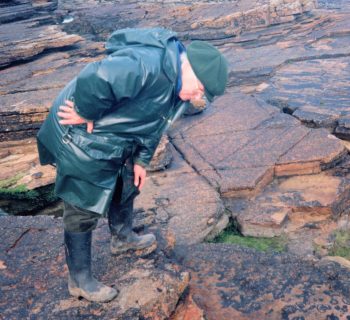
WBG looking at rock forms on Orkney, 1985
End of Day, Porthmeor, 1993, oil and acrylic on canvas, BGT444 and Scorpio Series No.1, 1995, acrylic on paper, BGT948
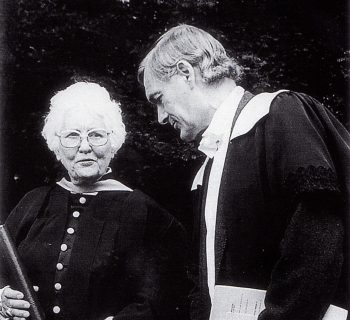
WBG receiving her honorary doctorate from the University of St Andrews with Professor Martin Kemp, 1992
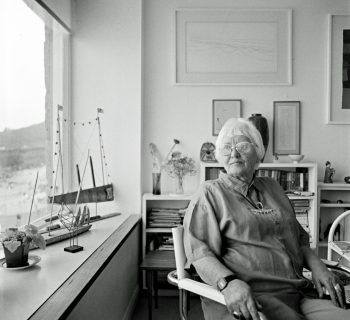
WBG in her Barnaloft sitting room overlooking Porthmeor Beach, St Ives
Photo: Anne Purkiss
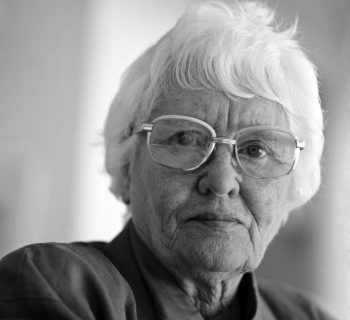
Portrait of WBG at Tate St Ives, 1993
Photo: Anne Purkiss
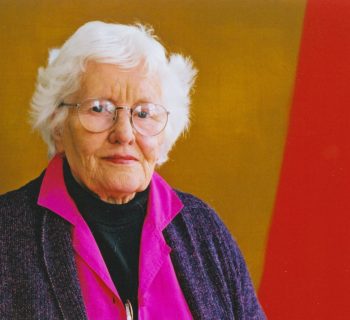
WBG Portrait, 1990s. Photographed in the studio set against an unfinished work on canvas
Photo: Rowan James.
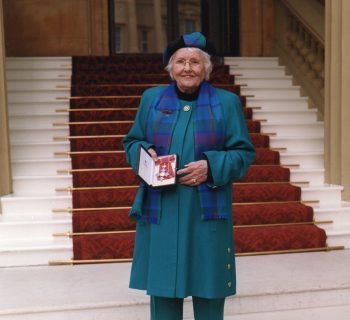
WBG receiving her CBE, March 2001
Photo: Charles Green
